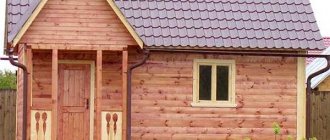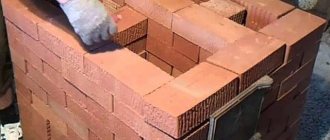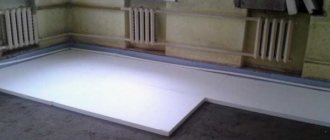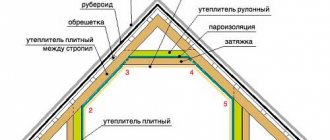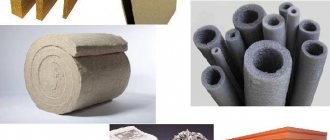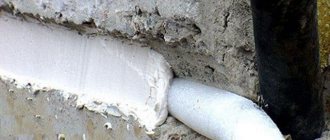03.09.201639281
Before the onset of cold weather, home craftsmen should take care to insulate the balcony door for the winter. Then heat loss will be minimal. Insulating the balcony door will protect your home from the cold from the street. This will help prevent drafts from appearing in the house from the balcony.
- LiveJournal
- Blogger
Balcony door
- Preparatory stage
- How to insulate different models of balcony doors?
- Upholstery
- Additional glazing
- Insulation of the space between doors
- Using a refrigerator cabinet to insulate a balcony
- Insulation of plastic doors
We insulate wooden doors
One of the primary reasons for cold access to the apartment is the installation of a wooden door on the balcony. In principle, if we assume that the door leaf is a wooden structure, then such a door is simply irreplaceable. But often, the doors to the balcony consist of panels that are not able to cope with such a task as retaining precious heat in the apartment. Too many problems come with such doors to the balcony:
- poor sealing of joints;
- poor insulation, and often non-insulated door leaf;
- drafts;
- poor-quality sealing of slopes.
First of all, before starting work, you should identify all the causes, and only then begin to eliminate them. And if you carry out everything in a complex manner, the result is guaranteed.
Errors in insulation and glazing of balconies: analysis from A to Z
1. Thin layer of insulation. To save money, unscrupulous contractors can lay one layer instead of 2-3 as required by technology, or reduce the thickness of the insulation itself, which will cause it to freeze. This is not noticeable under the cladding, but in winter the first frosts will make themselves felt. The required thickness and number of insulation layers is determined by the technologist at the start of the repair, depending on the selected type of material and the degree of insulation of the balcony or loggia.
2. Error in choosing insulation. Incorrectly selected material, as well as its insufficient thickness, can lead to freezing of the walls on the balcony during the cold period, and in addition take up valuable space in already small extensions. Instead of the well-known expanded clay and polystyrene foam, give the choice to tepofol, isolon or penoplex. They are light, thin and safe for health.
3. Lack of vapor barrier film. A vapor barrier must be installed between the layer of insulation and cladding if you are insulating the balcony with mineral wool, polystyrene foam or foam insulation. These materials are vulnerable to moisture and therefore need to be protected with a vapor barrier film.
4. Violations of all insulation technology. This includes many errors that at first glance would not seem significant to a “mere mortal.” For example, the wrong choice of sealant for joints, due to which cold bridges are formed. Monitor the entire repair process by taking photos or videos, in which case they can be viewed to identify errors and quickly correct them.
5. Incorrectly selected glazing. Frameless and aluminum glazing is of the cold type, since it does not have thermal insulation, and therefore insulation is impractical for such balcony windows. Choose warm PVC glazing with 5-7 chamber profiles and 2-3 chamber double-glazed windows.
6. Insulation due to PVC windows. Plastic windows do have thermal insulation properties, but their installation alone does not guarantee an insulated balcony. Along with plastic windows, it is necessary to carry out insulation, as well as additionally install an electric floor or an infrared heater.
7. Mistakes when laying the floor. Floors based on water heating from a central heating battery are prohibited on balconies and loggias for the same reason as removing the battery. Also, the base of the balcony cannot be overloaded with concrete screed and ceramic tiles. You can insulate the floor with several layers of insulating material, and lay light and flexible plywood on top. Carpet or laminate is laid on top of the plywood.
Necessary materials
To carry out work on insulating wooden balcony doors with your own hands, you first need to stock up on all the materials that will be required for this. First of all, you need to purchase insulation. This material is different for each direction. For example, to equip the door leaf, we stock up on foam rubber, insulate the slopes with foam plastic or glass wool, and use a regular sealant to seal the joints. You will also need wood putty, door trim material and plaster mixtures for finishing slopes.
Tilt and turn balcony door and its features
This type of design allows you to solve the issue of ventilation of the room. The problem of lack of fresh air is most acute with the onset of cold weather. The peculiarity of the folding mechanism is expressed in the ability to ventilate a room or room without fully opening the sash. Models of this type swing open on side hinges, like classic swing doors, and also swing into the room on the bottom hinge.
The design has limiters that regulate the size of the gap between the sash and the frame. This allows you to dose the volume of incoming air, reducing heat loss. This requires about 10 complex nodes responsible for mobility.
Based on the type of installation, a balcony model with a tilt-and-turn mechanism is divided into 2 types: free-standing or combined - included in the balcony block. The use of a frame is excluded due to structural features, so there are only single-leaf doors of this category.
Step-by-step instruction
This instruction will help you figure out the problem of how to insulate a wooden balcony door with your own hands:
- We clean the door leaf from the old paint and carefully examine it to see where there are defects in the thermal insulation. We seal all the joints of the panels with putty.
- We free the door leaf from all kinds of fittings: hinges, handles, etc. We position it so that it is convenient to carry out work. We cut out the upholstery material into pieces with dimensions that will be slightly larger than the insulated surface, and attach it along one edge of the door. For this it is better to use special upholstery nails.
- We lay foam rubber on the insulated surface.
- Gradually stretching the upholstery fabric from the secured edge, we continue to secure it every 15–20 cm. At the same time, do not forget to tuck the edge of the upholstery inward.
- Then three foam rubber strips are cut in accordance with the following dimensions: the width is equal to the thickness of the door, and the length of two strips is its height, the third is its width. We also produce strips from upholstery material. The length of these strips is the same as the foam strips, and the width is about 10-15 cm. Strips of finishing material are nailed on three sides.
- We create a seal from foam rubber strips, wrapping them with already attached upholstery, and then fixing them so that they can cover the gap between the door frame and the canvas itself.
- We mount the fittings onto the canvas and install it in place. For additional sealing, you can lay a seal around the perimeter of the box. However, if all the insulation work is done correctly, then this may not be necessary.
- To properly insulate a balcony door for the winter, it is necessary to seal the gaps between the door leaf and the glass.
Related article: Do-it-yourself water leakage sensor
The door leaf can be insulated on one side or both at the same time.
In addition, it should be remembered that the balcony door is not always the cause of heat loss. Cold can also penetrate through the slopes of the window structure; in this regard, they should also be given special attention.
How to insulate different models of balcony doors?
Insulation of wooden doors can be done in the following ways.
Upholstery
- The insulation is prepared with your own hands from felt, cotton wool or tow.
- The material is stitched with a layer of rags.
- For insulation, upholstery is made of dark leatherette or oilcloth according to a pre-made pattern with an allowance of 1 cm on each side.
- The insulation is nailed down with small nails in a checkerboard pattern.
- To decorate the edges, special rollers are made. They are placed around the perimeter, except for the edge where there are loops.
- The ends of the insulation are wrapped to cover the rollers.
- Nail the upholstery with small nails. Then the surface looks aesthetically pleasing.
Additional glazing
Door leaves with glass inserts are often insulated using double-glazed windows. 3 glass can become an excellent insulation material. At the same time, the performance characteristics of the product are improved.
- Additional glass is installed on the inside of the frame.
- A sealant is glued to the fastening points.
- The cut glass is fixed with nails.
- To remove the gap between the frame and the glass, the gap is treated with putty.
- The glass is secured with glazing beads or special metal strips using special self-tapping screws.
The beads should be painted so that they do not stand out against the background of the frame. This option allows you to make high-quality thermal insulation of the upper part of the doors, which is glazed.
- LiveJournal
- Blogger
Sealant for plastic doors
Insulation of the space between doors
Thermal insulation between the inner door and the outer door allows you to reduce internal heat loss. The optimal material is polystyrene foam with a thickness equal to the distance between the two balcony doors.
- Insulation is cut out of polystyrene foam.
- The workpiece is installed in the opening.
Old newspapers can be used as free insulation for the space between doors. Every practical person can insulate a wooden balcony door in this way. Home craftsmen need practical tips on how to do budget thermal insulation with your own hands in order to make economical and high-quality insulation for the balcony door.
- Place 3 or 4 newspapers together, unfolded, to form rolls. Their diameter should slightly exceed the distance between the door openings.
- Tape the edge of each roll.
- Prepare the required number of rolls.
- Fill the inner space of the rolls with crumpled newspapers.
- Glue the rolls together to make one block.
- Install insulation.
To save material for insulation, use lining material from old outerwear: jackets and raincoats.
In this case, thermal insulation is performed on the lower part of the door leaf.
- LiveJournal
- Blogger
Insulation of slopes
Using a refrigerator cabinet to insulate a balcony
Many people use the balcony as a kind of “storage room” where they store preparations for the winter. The balcony door can be considered as a place where you can install a refrigerator cabinet. This design will simultaneously perform 2 functions - to preserve marinades and canned foods, and to insulate the adjacent room from the cold that can penetrate the room from the balcony. For production, available materials are used - plywood, chipboard, beams. The cabinet is a mobile box with shelves. Then the owner of the apartment is provided with easy access to the balcony. One side of the cabinet should be open. It must be the same as the doorway.
- A refrigerator cabinet is made from scrap materials.
- Wheels are screwed onto the cabinet to make it mobile.
- The box is placed against the door with the open side.
- For decoration, wallpaper is used to cover the room.
Insulation of plastic doors
If there is a draft in the room, then the reason is that the device is loose and needs adjustment. When the sagging of the door is eliminated, and the cold from the balcony continues to penetrate into the home, it is necessary to check the rubber seal around the perimeter. If necessary, lubricate the tape. The free space can be filled with polystyrene foam, however, this material is difficult for people far from construction to work with. Therefore, it is easier to choose an easier and proven method.
Installation of thermal insulation is carried out by analogy with wood products. An insulated plastic door, covered with leatherette, prevents cold air from entering the house. The only difference is the use of construction adhesive instead of nails.
- Dismantle the door block.
- The fittings are removed, for example: a double-sided handle on the balcony door.
- Install insulation.
- Lubricate and replace all removed fittings.
- Make the decor.
If a gap has formed between the plastic slope and the wall, then it can be eliminated as follows:
- Unscrew the plastic slope.
- Seal the gap.
- Screw the slope into place.
To retain heat, you will also need to insulate the windows and walls. Today, many people install plastic balcony doors. It is recommended to choose burglary-resistant windows with double glass, since: the model can withstand increased loads; how to open a plastic window - a difficult task for burglars; The product effectively protects against drafts and adverse atmospheric conditions.
We insulate plastic doors
The process of insulating a plastic structure as such is impossible, since the structure is produced in finished form and does not provide for such work. Based on this, when ordering the appropriate PVC products, you should consult with specialists in advance and select the required configuration.
Types of double-glazed windows
It is best when the ordered products contain a two-chamber or three-chamber double-glazed window. Although there are cases when doors are installed without using double-glazed windows. But this does not always look aesthetically pleasing. Answering the question of how to insulate a plastic balcony door, we come to the following conclusion. Since PVC doors are an airtight structure, the problem of cold air entering the apartment should be solved by eliminating cracks in slopes and thresholds, as well as replacing rubber seals. Another reason is an incorrectly adjusted door. Let’s figure out how you can eliminate all these shortcomings with your own hands.
Methods for insulating a plastic balcony door
When deciding how to insulate a plastic balcony door, you should first pay attention to its adjustment. Plastic doors have a design that allows them to be adjusted for the purpose of insulation and replacement of individual elements; the list of main works is as follows:
- Strengthening the pressure of the door leaf to the frame. It is adjusted by eccentric bolts at the end of the door using a hex key inserted into the recess of the bolt head.
- Reducing the distance between the door leaf and the frame. This is done by turning the screw in the top hinge of the doors.
- Replacing the seal. The seal may lose its elasticity and shape over time - in this case, it should be dismantled and a new one installed; replacement should be done on the door leaf and in the opening.
For installation, you should use door sealing tapes designed for the same type of profile. It is advisable to use a chamber type (their design provides a tighter fit than the petal type), the work is carried out in the following sequence:
- They dismantle the plastic balcony door by removing the decorative trim from the top hinge, after which they remove the pin from the hinge, pulling it down with pliers and tapping it with a hammer. Open the door slightly and remove it from the bottom hinge.
- Remove the old seal, moving the door fasteners aside with scissors, and install a new one in its place, gluing it at the top center.
- Do the same with the door frame seal - remove the old seal and replace it with a new one, gluing it at the top in the middle.
In order not to confuse the side of the tape during installation, you should remember the location of the old insulation or install the new one with the wider side outward.
- Replacement of glazing. The solution to the question of how to insulate a balcony door for winter may be to install energy-saving glass instead of regular glass. This is effective in casements with continuous glazing and can reduce heat loss several times. Low-E low-emissivity glass with magnetron sputtering of tiny particles of metals and oxides reflects heat back into the room; its installation in a single-chamber or double-glazed window increases its energy savings by 70%.
Heat savings are also provided by another type of energy-saving double-glazed windows - with argon between the chambers. Replacement of packages is carried out by simply removing the beads.
Determining the cause
When choosing a way to insulate a balcony door yourself for the winter, we determine the weak points. This is not difficult at all, you just need to follow these steps:
- Inspect the slopes. The fact is that when performing work on installing a balcony structure, the integrity of the slopes is most often violated. Voids may occur when blowing in the cracks with foam. You can check this fact with a lit candle. Its flame will tell you exactly where the cold air flows.
- Checking the threshold. This is one of the weakest points. He gets the most attention.
- After installing the door structure, we check the tightness of its connection. If necessary, we make appropriate adjustments to the fittings.
Do not forget that the density of the door to the door frame should be different in winter and summer. Therefore, twice a year we carry out the procedure for regulating the structure - transferring to the appropriate operating modes.
Materials for insulating balcony doors
For the purpose of thermal insulation of a balcony door, different insulation materials can be used. One of them is polystyrene foam. It is inexpensive and sold at any building materials store. The problem with polystyrene foam is only the relatively intense absorption of moisture. And you can also encounter such a difficulty as displacement of thermal insulation boards during operation, which leads to a deterioration in the level of insulation.
You can get reliable thermal insulation using isolon. Its advantage is that it is small in thickness, but is able to provide high-quality protection against heat loss. The only drawback of insulation is its high cost. Izolon can also be foil-coated. Due to the additional layer of foil, it is possible to create conditions under which infrared radiation is effectively reflected back into the room.
Insulation of slopes
Slope finishing in section
Related article: Do-it-yourself transformer bed made from laminated chipboard
This process is performed in several ways; for clarity, let’s pay attention to plastic slopes and consider an example of their insulation. Work should be performed according to the following algorithm:
- First of all, the sheathing is installed. It is better to make it from a metal profile, since it is in these places that a large amount of moisture accumulates. The wooden structure may become deformed.
- We attach the plastic starting strip to the edge of the PVC structure.
- We put insulation inside the sheathing.
- We insert plastic into the starting strip and close the gap between it and the opening with a special plastic corner.
Before you start insulating your balcony door by sealing the slopes, do not forget to check how well the foaming of the joints was done.
In a similar way, you can insulate slopes using drywall. But in this case, you will have to perform additional work on finishing the slopes. They will need to be puttied and painted. Slopes are also insulated using polystyrene foam. For this purpose, special adhesive mixtures are used. After installing the foam sheets, they should be reinforced and puttied.
Adjusting the door pressure
Even if the structure was initially installed efficiently, after some time problems will inevitably arise that will require adjustment work. The reason for a loose fit of the door leaf to the frame may be the following:
- seal wear;
- subsidence of the door leaf.
In such cases, the degree of connection between the balcony door and the frame should be strengthened using special regulators. If these are not provided for in this design, then the seal should be replaced.
Related article: Note to parents: the basics of choosing the right curtains and tulle for the nursery
Door sagging can be checked using a building level. If such a violation occurs, it can be adjusted using special mechanisms located in the door leaf. They allow you to move the canvas in any direction: both horizontally and vertically. For more information about adjusting the door pressure, watch this video:
As you can see, insulating a balcony door is not such a complicated process. It is quite possible to do it yourself, without involving specialists. Using insulation, you can increase the room temperature by several degrees.
How to choose insulation?
High-quality insulation helps prevent cold from entering the room and prevents heat loss. Materials designed to rid rooms of cold can be found in any hardware store. When choosing insulation, you need to know the types and main advantages of each of them.
- Foam rubber
. Relatively cheap and easy to use. It can be attached using special glue or nails. It is easy to insulate a room with foam rubber, but its main disadvantage is its fragility. Due to changes in temperature and humidity, after 2-3 years it collapses and loses its insulating properties.
Foam rubber
- Plastic wool
. Despite its popularity, it has some disadvantages. It absorbs moisture well, creating suitable conditions for the proliferation of fungal organisms. After some time, the layer of plastic wool moves, which affects its insulating properties.
cotton wool
- Izolon
. Belongs to the group of modern insulation materials. It has a number of undeniable advantages. High thermal insulation and minimal thickness of the isolon provide reliable protection from the cold. Relatively resistant to climatic changes. A significant drawback is the high price.
Izolon
- Expanded polystyrene
. It is a thermoplastic polymer. You can insulate your balcony door with polystyrene foam yourself. Retains heat well and is easy to use.
Expanded polystyrene
- Polyurethane foam
. Fills cracks around the entire perimeter of the door. Affordable and easy to use. Insulating gaps with polyurethane foam is the best solution. It reliably protects the room from exposure to cold air and is resistant to temperature changes.
Polyurethane foam
- Penofol
. Perfect for thermal insulation work with a wooden door. It is a combination of polyethylene and aluminum foil. Excellent heat retention and good sound insulation. Penofol can be fastened with ordinary nails, which will not affect its insulating properties.
Penofol



